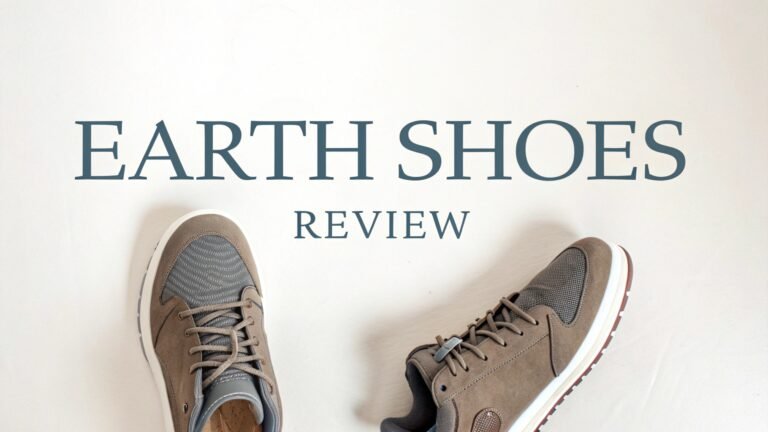Saucony Endorphin Edge Review: Should You Try This?
Trail runners who want speed without sacrificing comfort have found their perfect match.
The Saucony Endorphin Edge brings carbon fiber technology from road racing to the trails, creating a shoe that performs exceptionally well on moderate terrain.
This comprehensive review examines every aspect of this innovative trail running shoe to help you decide if it belongs in your running rotation.
Key Takeaways
Speed-focused design makes the Endorphin Edge ideal for fast-paced trail running and racing. The carbon fiber plate and responsive foam create a propulsive feel that encourages quick turnover on moderate trails.
Versatile performance allows runners to transition seamlessly from roads to trails. This shoe handles hard-packed surfaces exceptionally well while providing enough traction for varied terrain conditions.
Comfort meets protection through the PWRRUN PB foam midsole, which offers 40% more softness than average running shoes while maintaining responsiveness for longer distances.
Fit considerations require attention, as the generous toe box and potentially loose heel may not suit all foot shapes. Strategic lacing can help achieve a more secure fit.
Price point at $200 positions this shoe in the premium category, making it a significant investment that demands careful consideration of your specific running needs.
Design and Construction
The Saucony Endorphin Edge showcases thoughtful engineering throughout its construction. The engineered mesh upper provides excellent breathability while offering protection from trail debris. This material choice balances durability with weight savings, contributing to the shoe’s overall lightweight feel.
The wishbone-shaped carbon fiber plate represents the shoe’s most distinctive feature. This Carbitex AFX plate provides 38% more stiffness than average running shoes while maintaining flexibility where needed. The split design in the forefoot allows for more natural foot movement on uneven terrain.
Construction quality appears solid across all components. The upper materials feel durable enough to withstand regular trail use, while the overall build quality suggests this shoe can handle significant mileage. The attention to detail in component integration creates a cohesive package that performs well under various conditions.
Midsole Technology and Cushioning
PWRRUN PB foam forms the foundation of the Endorphin Edge’s cushioning system. This lightweight material delivers exceptional energy return while providing 40% more softness than typical running shoe foams. The result creates a responsive yet comfortable platform for extended trail adventures.
The stack height measures approximately 36mm in the heel and 30mm in the forefoot, creating a 6mm drop that feels natural for most runners. However, lab testing revealed slightly different measurements of 33.4mm heel and 26.3mm forefoot, resulting in a 7.1mm drop. These variations likely stem from different measurement methods.
Cushioning performance excels during longer runs where comfort becomes paramount. The foam maintains its responsiveness throughout extended efforts while providing adequate protection from trail impacts. This balance makes the shoe suitable for both training runs and race day efforts across various distances.
Carbon Fiber Plate Performance
The carbon fiber plate technology transforms the Endorphin Edge’s performance characteristics significantly. The Carbitex AFX plate enhances uphill climbing efficiency while providing noticeable propulsion during downhill sections. This technology creates a rolling sensation that encourages faster paces naturally.
Plate stiffness measures 38% higher than average running shoes, yet the wishbone design maintains necessary flexibility. The split forefoot design allows for natural toe splay and adaptation to uneven surfaces. This engineering approach prevents the harsh, rigid feel common in some carbon-plated shoes.
Energy return from the plate becomes most noticeable during tempo efforts and racing. The propulsive effect works best on moderate trails and hard-packed surfaces where the plate can function optimally. Technical terrain may limit the plate’s effectiveness due to the need for more cautious foot placement.
Outsole and Traction
PWRTRAC rubber compound forms the outsole foundation, providing reliable grip across various trail conditions. The 4mm multidirectional chevron lugs offer excellent traction on loose dirt, soft terrain, and wet surfaces. This lug pattern balances grip with durability effectively.
Traction performance varies by surface type:
- Excellent on loose and soft terrain
- Good on wet surfaces and moderate trails
- Less reliable on slick, hard surfaces
- Challenging on wet rocks
The outsole design prioritizes speed over aggressive traction, making it ideal for runners who frequent groomed trails and fire roads. The lug depth provides sufficient grip for most trail conditions while maintaining the fast feel that defines this shoe’s character.
Fit and Sizing
Fit characteristics of the Endorphin Edge require careful consideration before purchase. The toe box offers generous room for most foot shapes, allowing natural toe splay during longer efforts. This spacious design prevents hot spots and pressure points that can develop during extended trail runs.
However, the heel and midfoot areas present potential concerns. Some runners experience a loose fit in these regions, which can cause foot shifting during technical terrain navigation. The upper construction may not provide sufficient lockdown for runners who prefer a snug, secure feel.
Strategic lacing techniques can improve the fit significantly. Experimenting with different lacing patterns helps achieve better heel retention and midfoot security. Runners should consider trying the shoe with their preferred trail running socks to assess the complete fit package.
Weight and Feel
Weighing approximately 9.0 to 9.5 ounces for men’s size 9, the Endorphin Edge feels notably light on the feet. Women’s sizes come in around 7.8 ounces for size 8, making this shoe competitive with other lightweight trail options. This weight reduction enhances the overall speed-focused experience.
The lightweight construction never compromises protection or durability. Despite the reduced weight, the shoe provides adequate cushioning for longer distances and sufficient protection from trail hazards. This balance makes it suitable for both training and racing applications.
On-foot feel emphasizes speed and responsiveness over plush comfort. The combination of lightweight materials and carbon fiber technology creates an energetic sensation that encourages faster paces. Runners seeking maximum cushioning may find this feel too firm for their preferences.
Terrain Suitability
The Endorphin Edge performs best on moderate trails and hard-packed surfaces. Fire roads, groomed single track, and packed dirt trails represent ideal terrain for this shoe. The carbon plate technology and responsive cushioning shine brightest on these surfaces.
Technical terrain presents some limitations:
- Rocky sections require careful foot placement
- Loose rocks may challenge stability
- Steep descents demand extra attention
- Root-covered trails need cautious navigation
Road to trail transitions happen seamlessly with this shoe. The outsole provides enough grip for trail sections while maintaining efficiency on paved surfaces. This versatility makes it excellent for mixed-terrain adventures and races that combine road and trail segments.
Stability and Support
Stability represents the most debated aspect of the Endorphin Edge’s performance. The high stack height and soft foam create potential stability concerns, particularly on technical terrain or during slower-paced efforts. Some runners find the shoe unstable when navigating uneven surfaces.
However, other runners report excellent stability characteristics, especially compared to other carbon-plated trail shoes. This variation likely depends on individual running style, foot shape, and terrain preferences. Faster paces tend to improve stability as the shoe’s design favors quick turnover.
The generous fit may contribute to stability issues for some runners. A loose heel or midfoot can allow unwanted foot movement within the shoe. Proper sizing and lacing become crucial for achieving optimal stability performance.
Durability and Longevity
Early durability reports suggest the Endorphin Edge can handle significant mileage effectively. The PWRTRAC outsole demonstrates excellent wear resistance across various trail surfaces. The rubber compound maintains its grip characteristics well beyond the initial break-in period.
Upper materials show good resistance to trail debris and abrasion. The engineered mesh construction balances breathability with protection, showing minimal wear after extended use. Reinforcement in high-wear areas contributes to overall longevity.
The carbon fiber plate and midsole foam maintain their performance characteristics throughout the shoe’s lifespan. Unlike some carbon-plated shoes that lose their pop over time, the Endorphin Edge retains its responsive feel for hundreds of miles.
Comfort for Long Distances
Long-distance comfort becomes a crucial consideration for trail runners tackling ultra distances or extended training runs. The PWRRUN PB foam provides excellent cushioning for efforts lasting several hours. The 40% softer foam reduces fatigue while maintaining responsiveness.
Breathability through the engineered mesh upper helps regulate temperature during longer efforts. The material allows adequate airflow while preventing debris infiltration. This balance becomes particularly important during hot weather conditions or high-intensity efforts.
Pressure point development remains minimal thanks to the generous toe box and thoughtful upper construction. Hot spots rarely develop, even during extended wear. The smooth internal construction prevents irritation that can plague runners during ultra-distance events.
Value and Price Point
At $200, the Endorphin Edge positions itself in the premium trail running shoe category. This price point reflects the advanced technology and materials used throughout the construction. The carbon fiber plate and specialized foam justify the higher cost for serious trail runners.
Value assessment depends heavily on intended use. Runners who frequently tackle moderate trails and desire speed-focused performance will find excellent value. Those who primarily run technical terrain or prefer maximum cushioning may find better options at lower price points.
The shoe’s versatility adds value by serving multiple purposes. Its ability to handle road sections, moderate trails, and racing applications means it can replace multiple specialized shoes in some runners’ rotations.
Comparison with Competitors
The Endorphin Edge competes directly with other carbon-plated trail shoes in the premium market segment. Its unique positioning between road and trail performance sets it apart from more aggressive trail-specific options. The speed-focused design differentiates it from traditional trail shoes.
Compared to pure trail racing shoes, the Endorphin Edge offers more versatility but potentially less technical terrain capability. Against road racing shoes, it provides superior traction and protection while maintaining much of the speed-focused feel.
The wishbone plate design offers advantages over full-length carbon plates in terms of flexibility and natural foot movement. This engineering approach may appeal to runners who find other carbon-plated shoes too rigid or uncomfortable.
Frequently Asked Questions
Is the Saucony Endorphin Edge good for beginners?
The Endorphin Edge works best for experienced trail runners who understand their preferences. Beginners might benefit from more traditional trail shoes first.
Can I use these shoes for road running?
Yes, the Endorphin Edge handles road sections well and transitions smoothly between surfaces. The outsole provides adequate grip on pavement.
How does the sizing run?
Most runners find the sizing runs slightly long with a generous toe box. Consider trying them on or ordering a half size down.
Are these shoes waterproof?
No, the Endorphin Edge uses breathable mesh that allows water penetration. They dry relatively quickly after wet conditions.
What type of trails work best?
Moderate trails, fire roads, and hard-packed single track represent ideal terrain. Technical rocky sections may challenge stability.
How long do these shoes typically last?
Durability reports suggest 300-500 miles depending on terrain and running style. The outsole and upper materials show good longevity.

Mia Smith is the founder of Shoe Storyteller, a blog that celebrates the art and stories behind shoes. With a passion for fashion and a flair for storytelling, Mia brings a unique perspective to the world of footwear.







